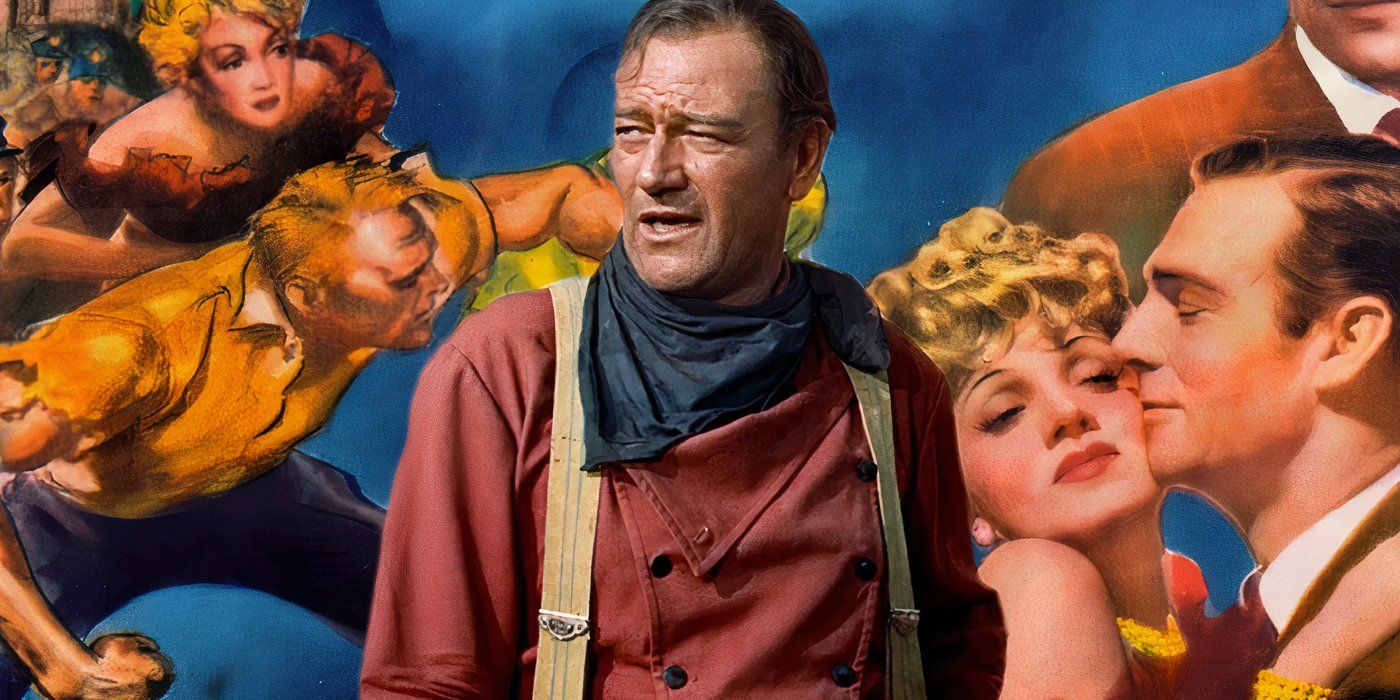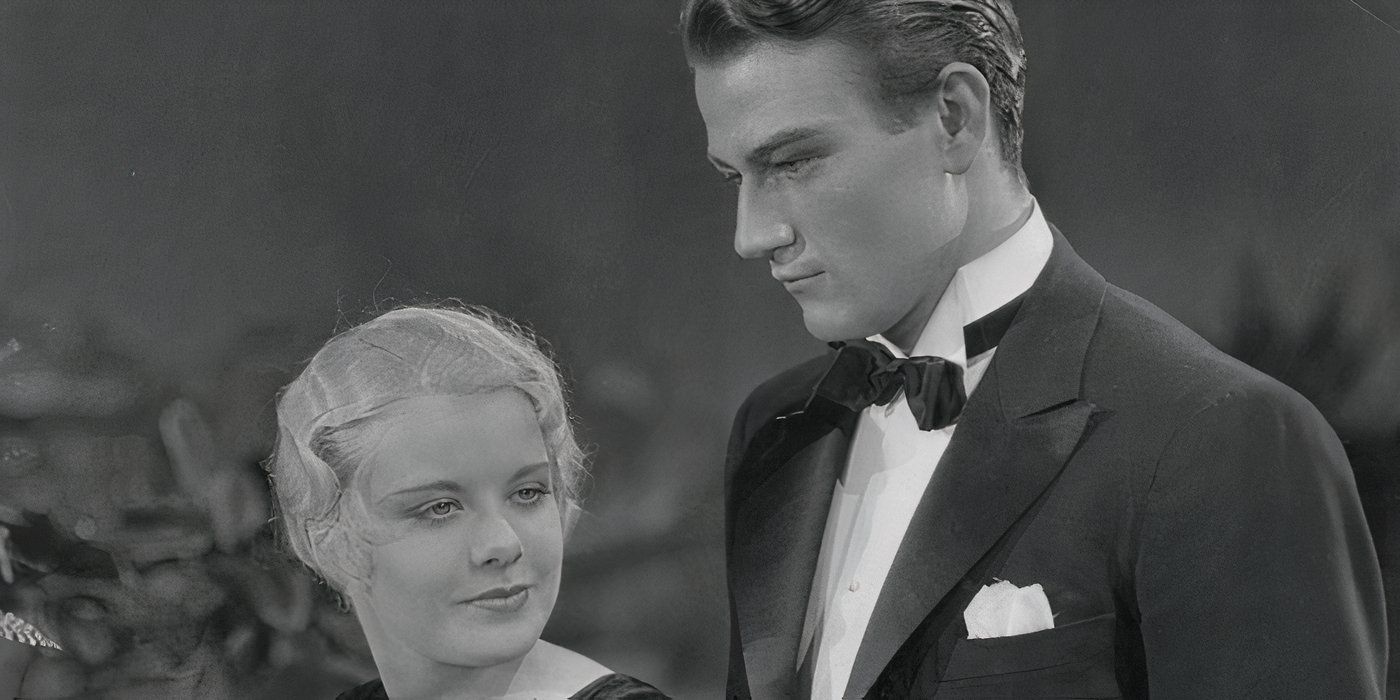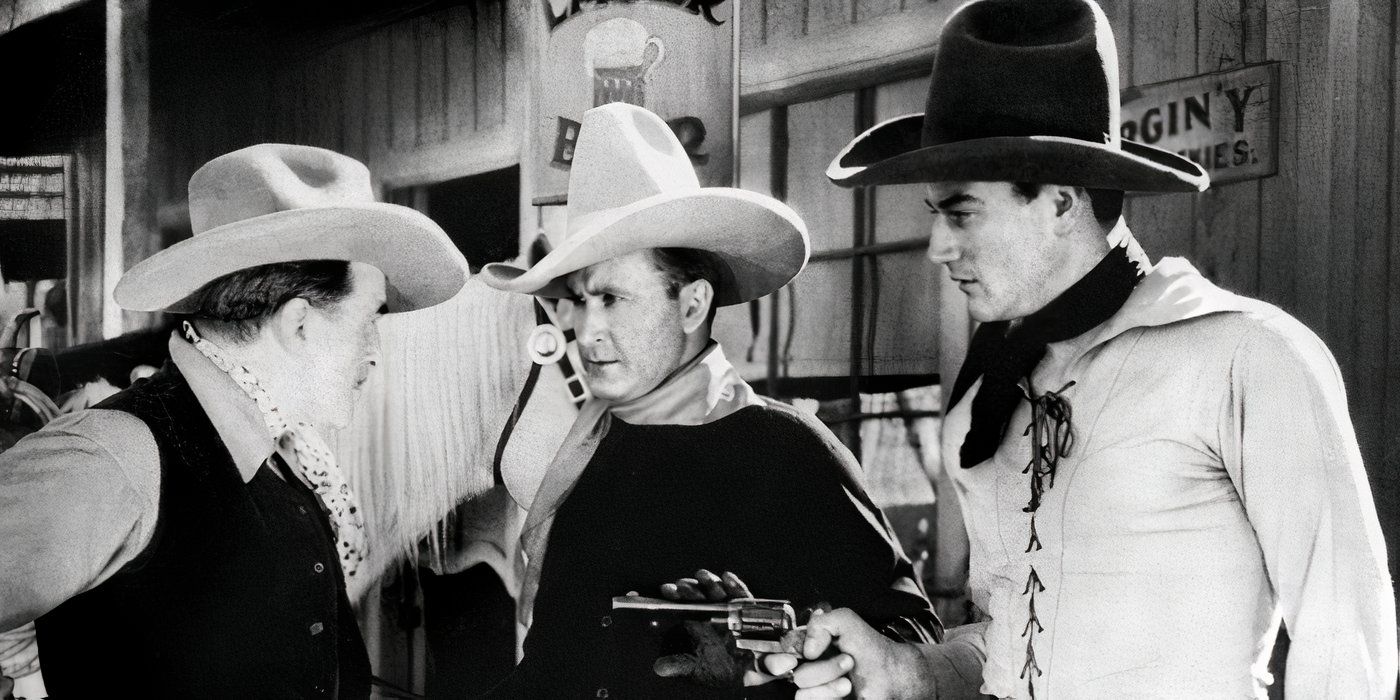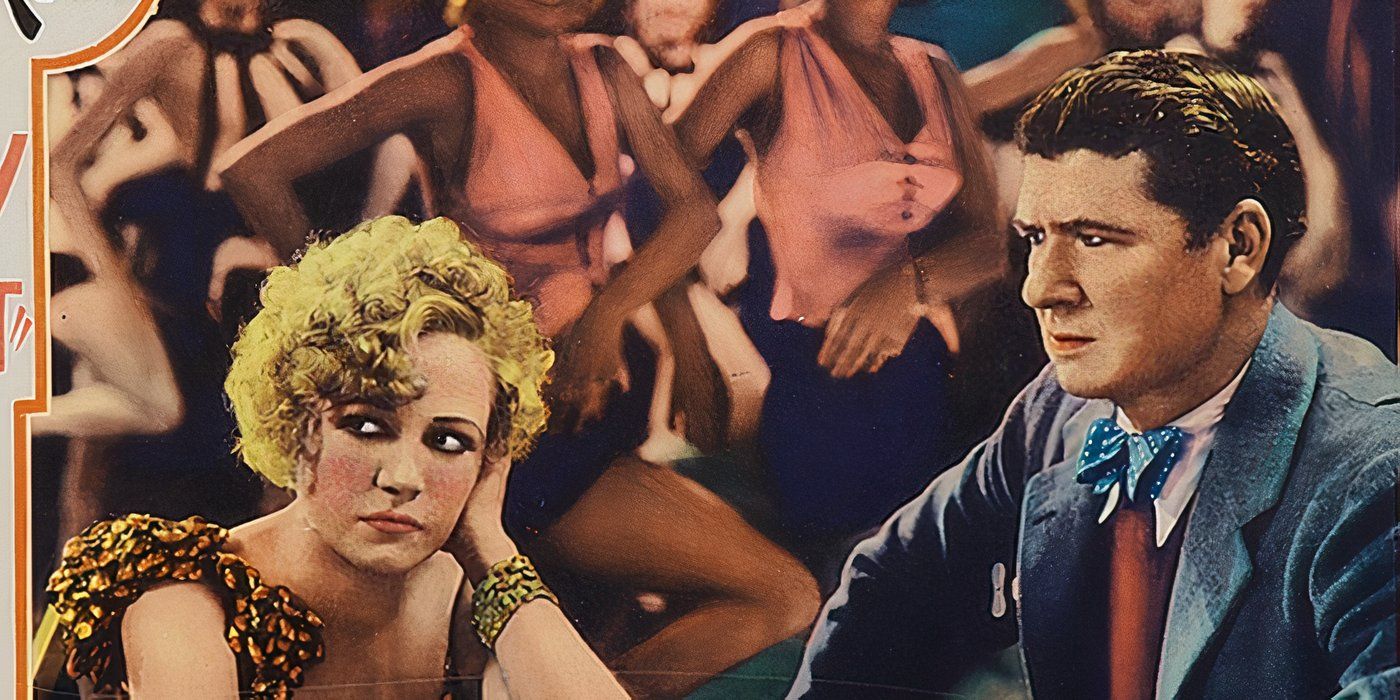
John Wayne
He was among the most popular and well-known actors of the 1940s and 50s, to the point that almost all the roles he adopted in his later career were as the film's protagonist. Wayne's star power alone was enough to entice most audiences to watch his new projects, regardless of the story or the filmmakers involved. It was a kind of Hollywood attraction that's rarely seen today, and it meant that John Wayne's best films almost always had him at their core.
However, John Wayne's films weren't always Westerns or war films, and they didn't always feature Wayne at the forefront. The actor had an astonishing range that wasn't often seen in mid-century Hollywood. It was much more common for stars to carve out their niche in the industry and stick to it - but although Wayne certainly found his niche in westerns and war filmshe was always willing to step out of his comfort zone and try something new. This made him one of the most versatile stars of the time, even when he wasn't top billing on a specific project.
10
Three Lost Girls (1931)
Directed by Sidney Lanfield
Three lost girls was one of John Wayne's first credited roles, and his character is far from the macho heroes he would later play so often. The film revolves around three girls who abandon their small town and leave their former lives behind to seek fame and fortune in the big city, where they encounter a series of figures who prove that glitz and glamor aren't all they're cracked up to be.
In Three girlsWayne plays Gordon Wales, the neighbor of one of the titular girls who introduces her to a local gangster and triggers her slippery descent into crime and secrecy. It's a gripping story of deceit, love and crime that incorporates all the melodramatic theater of the time, giving Wayne a complex, multifaceted role that is very different from his trademark.
9
Maker of Men (1931)
Directed by Edward Sedgwick
Creator of Men
Maker of Men is a sports drama released in 1931. The film follows Bob, who faces rejection from his father, Coach Dudley, his girlfriend, and his school due to his poor football skills. Determined to prove himself, Bob joins a rival college team with the goal of defeating his father's team.
- Director
-
Edward Sedgwick
- Release date
-
August 3, 1931
- Cast
-
Jack Holt, Richard Cromwell, Joan Marsh, John Wayne, Natalie Moorhead, Richard Tucker, Walter Catlett, Ethel Wales, Robert Alden, Paul Hurst, Ward Bond, Buster Crabbe, Joe Sawyer
- Character(s)
-
Dudley, Bob Dudley, Dorothy, Dusty Rhodes, Mrs. Rhodes, Mr.
- Execution time
-
71 minutes
Although it is one of the actor's lesser-known projects, Creator of Men is surprisingly one of John Wayne's most entertaining and rewatchable films. It's much less intense and dramatic than the projects he later gravitated towardcenters on a football coach and his son who are torn apart when the son decides to play for a successful rival team. It's packed with high drama, exciting sports action, and even some comedy that holds up surprisingly well.
Creator of Men is far from the traditional John Wayne filmbut the actor still manages to shine in his brief performance. He plays the character Dusty Rhodes, a supporting character who plays an interesting role in tearing this family apart further and emphasizing the intensity of these low-risk sports. It's a great watch for anyone unfamiliar with Wayne's work, simply because it's so different from everything else.
8
Texas Cyclone (1932)
Directed by D. Ross Lederman
Texas cyclone was one of John Wayne's first westerns, and although he didn't get the lead character, his role was arguably even more fun to watch. The story revolves around a man named Texas Grant who stops in a small town in the American West during his travels, where he is shocked to learn that everyone there recognizes him as a man suspected of being dead. From there, the film slowly unravels this mystery with fascinating relationships, dynamic characters and surprising twists.
Wayne plays a character named Steve Pickett, an honest resident of the small town who develops a close friendship with Texas Grant and helps him with his duties once he fully embraces his assigned identity.
Wayne plays a character named Steve Pickett, an honest resident of the small town who develops a close friendship with Texas Grant and helps him with his duties once he fully embraces his assigned identity. It's a really fun, well-written John Wayne western that no one talks about, but it's a pivotal moment in the star's career.
7
Law of Two Fists (1932)
Directed by D. Ross Lederman
John Wayne's second collaboration with filmmaker D. Ross Lederman in 1931 Law of Two Fists It's a very different kind of Western that finally gives Wayne the more mature, bravado role he would later become known for. The story follows an American farmer who finds himself the victim of a complex scam by a group of dishonest farmers, forcing him to take revenge, settle scores and prevent them from deceiving the other residents of his city.
Wayne's role in Law of Two Fists is admittedly smallbut the actor still leaves an impression whenever he's on screen. It's easy to see the beginning of his Hollywood charm in this project, working alongside a filmmaker he knows and beginning to establish himself in the western genre. It's not one of Wayne's best-known or most popular projects, but it's undeniably one of his most formative.
6
Lady and Gentleman (1932)
Directed by Stephen Roberts
Madam and sir was a classic Hollywood drama that embodies everything audiences love about going to the movies: high-stakes drama, romantic relationships, beautiful visuals and a sweeping soundtrack that accompanies the entire narrative. The story follows two very different individualsa retired wrestler and beautiful nightclub singer, who is faced with the challenge of raising her friend's recently orphaned son. While it's not one of John Wayne's defining films, it's certainly one of his most underrated.
The problem with many Wayne Westerns is that the stories can feel quite similar and repetitive, as the genre has developed a formula and rarely dared to stray too far from it. However, with these types of sentimental dramas, writers had much more freedom to experiment with new ideas and new concepts that audiences may not have seen before. That's what he did Madam and sir so popular at the time, and it's the romanticized Hollywood love story that keeps it so enjoyable today.
5
Babyface (1933)
Directed by Alfred E. Green
baby face It was arguably John Wayne's first step into the noir genre, which grew enormously in popularity throughout the '30s and '40s. The film starred Barabra Stanwyck as Lily Powers exploring the character's exploration of sex and romance to climb the social ladder and improve her financial situation. Wayne appears briefly as one of Powers' lovers, but his role in this project is admittedly much smaller.
Censorship has caused many iconic films to be banned in the US, but baby faceThe film's gripping story and immense popularity kept it in discussion for many years.
What's so fascinating baby face they are open and transparent discussions about femininity and sexuality. This made it a major topic of discussion in the pre-Code era of cinema, before censorship was widely applied to all Hollywood releases and these discussions became more widely restricted. Censorship has caused many iconic films to be banned in the US, but baby faceThe film's gripping story and immense popularity kept it in discussion for many years.
4
The Life of Jimmy Dolan (1933)
Directed by Archie Mayo
There's no denying it The Life of Jimmy Dolan is one of John Wayne's lesser-known projects, but that doesn't mean there's nothing of merit in this classic Hollywood drama. The film stars Douglas Fairbanks Jr as the titular characteran acclaimed boxer who finds himself accidentally blamed for the death of a reporter in one of his fights. After an intense legal battle that he manages to win, another lawman pursues the famous boxer and tries to prove his crime for good.
The Life of Jimmy Dolan has all the drama and twists audiences could want from this type of film, but The project hasn't aged very well in the years that followed. Some of the narrative is very confusing, the performances are not as committed as they could be and the visual style is nothing new.
3
The Spoilers (1942)
Directed by Ray Enright
After John Wayne's career fully took off in the mid-1930s, it took until 1942 for the Hollywood star to adopt another supporting role and sacrifice the lead role for someone else. This project was The spoilersa big-budget Western from Universal Pictures that told the story of an Alaskan prospector who becomes involved with an American lawman over the affections of an elusive saloon singer.
The 1940s were home to some of the most influential Western films ever made, such as filmmakers began to subvert audience expectations and try some new ideas that were previously considered too bold and risky. One of these ideas was to mix the high-stakes action of the Western genre with a calmer, more sentimental romance that would help balance the tone of the narrative - and The spoilers does it perfectly,
2
Pittsburgh (1942)
Directed by Lewis Seiler
Pittsburgh It's a very interesting project for 1940s Hollywood, as the story doesn't have a clear protagonist. There is an argument to be made for several of the main characters being the "lead", just as one could argue that none of them are. John Wayne is certainly the most recognizable member of the cast, but the project is essentially an ensemble. The film follows several figures whose lives revolve around Wayne's character, Markham.a greedy coal miner who exploits others for his benefit.
Pittsburgh is one of Wayne's less traditional and more experimental projects, but it worked in his favor and was quite successful with the public.
Although the story revolves around Markham, the other characters in this tale are equally important to the progression of the narrative. It is almost the story of a place, and not of any person who lives there, as its vague title suggests. Pittsburgh is one of Wayne's less traditional and more experimental projects, but it worked in his favor and was quite successful with the public.
1
They Were Expendable (1945)
Directed by John Ford
They were expendable was John Wayne's third collaboration with John Ford, the hugely popular filmmaker who essentially monopolized the western genre during the 1940s and 1950s. They had previously worked together on Diligencewhich undoubtedly made Wayne the star he was destined to become, and the lesser-known The long journey home.
They were expendable was another huge hit that cemented this hard-working duo as an all-time great collaboration, telling the story of a naval commander struggling to prepare his ship for battle at the start of World War II. It is undoubtedly the only time that John Ford climbs John Wayne in a non-leading role, as he quickly recognized the actor's screen presence and capitalized on it for years to come.


